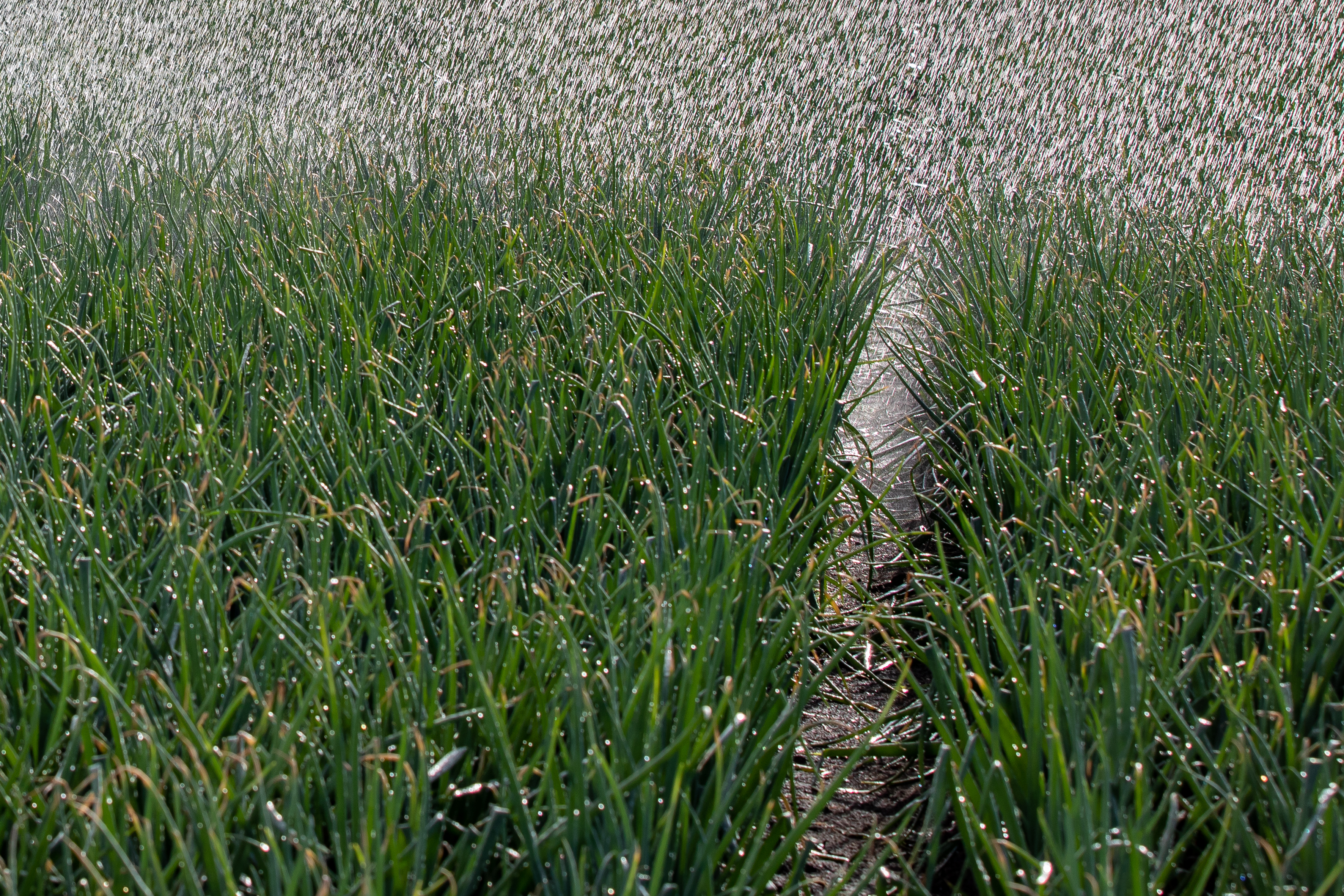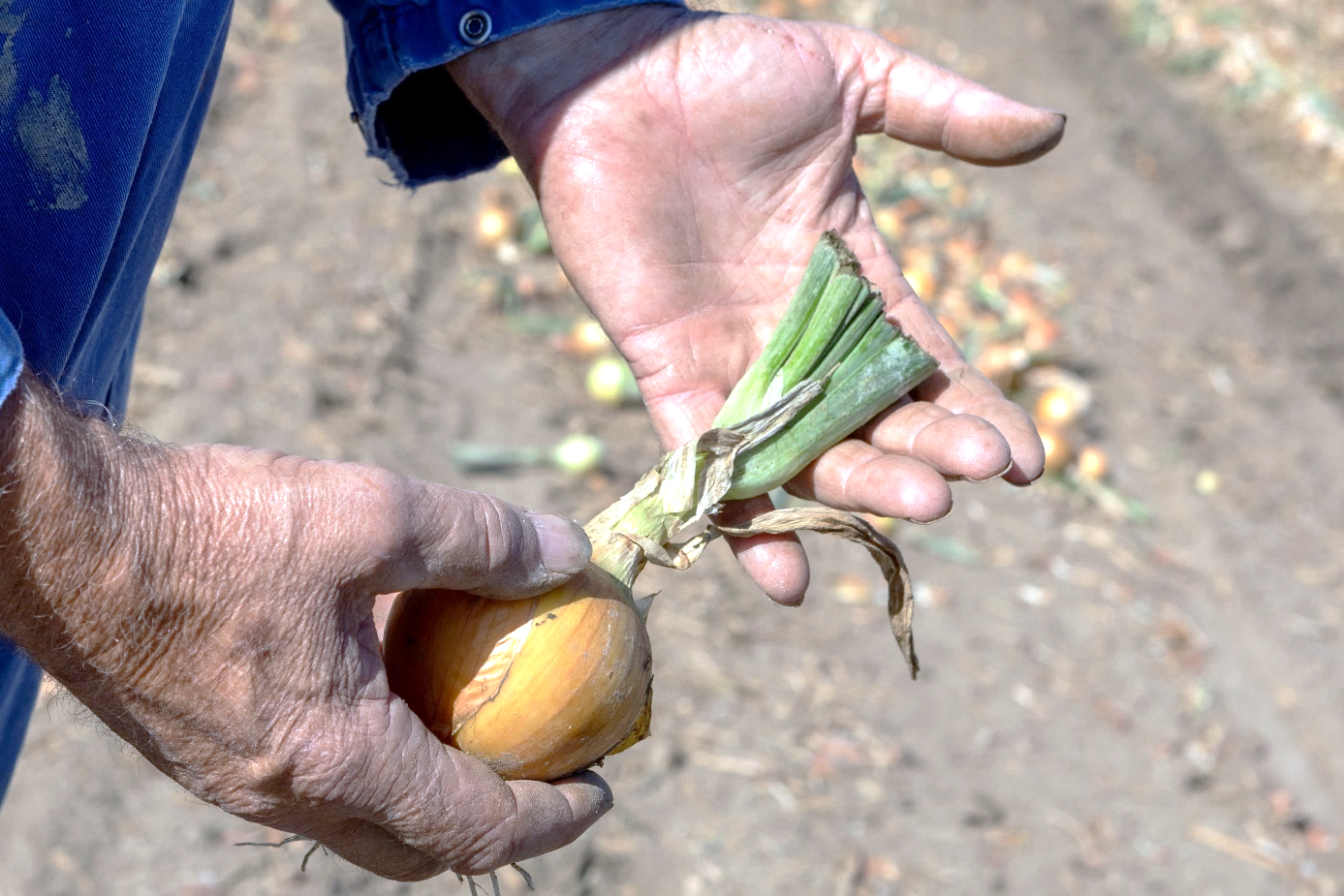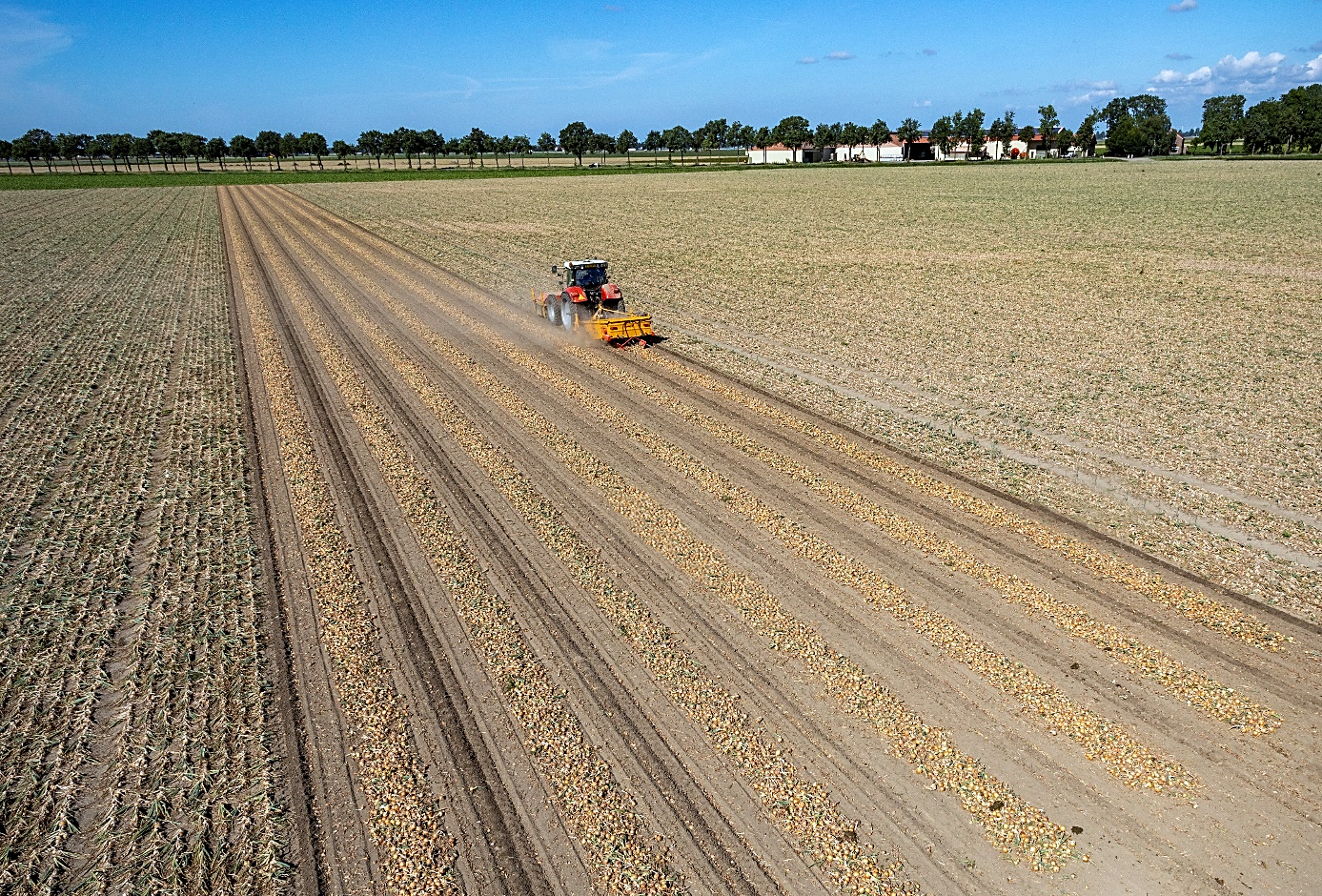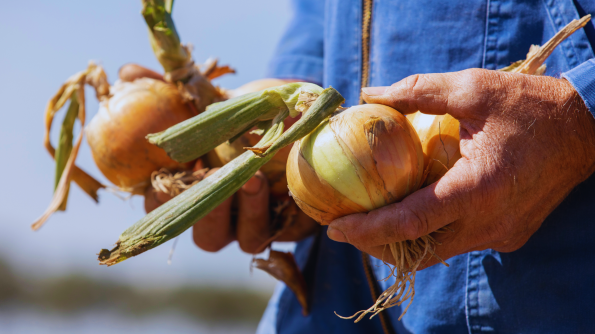The Fellowship of the Holland Onion - part 3 -
In the third part (The Harvesting Season)of our new series of video clips 'The Fellowship of the Holland Onion' we are moving on to the beginning of the harvesting process. Now that summer is coming to a close and the days are getting shorter, onion grower Co van den Dries is aiming his full attention to the approaching onion harvest.
The onion crop is in full bulb formation. The weather is excellent for further crop growth, but will form no new green foliage anymore. It’s the onion bulb that will continue to grow in size now drawing all the growing nutrients from the remaining foliage, making the onion neck increasingly soft and easily collapsing. The onion foliage will therefore fall over soon.
It is important to check the soil moisture regularly during this period and to irrigate when necessary. In general, onions in this phase need about 25 mm of water per week for evaporation and a good bulb formation, which determines the yield. If rainfall does not provide this amount, tailor-made irrigation is required. The moisture supply from the capillary rise is also insufficient for the crucial growth period that lies now ahead. Fed by the warm sun, Co's onions are already nicely high-round, but they still have to grow considerably in size for a good yield. The precipitation deficit in the soil must therefore be supplemented now.
The automatic irrigation reels have been driven out. The hose from the reel is pulled through on a track between the onion beds. The sprinkler trolley is automatically controlled and sprays the crop with exactly the required amount of spring water. That spring water is pumped from the onion grower’s own well. The installation takes into account all field data such as boundaries, ridges and headlands. In this way, all the water reaches the crop and less water is lost. The higher pressure on the nozzle gives a finer mist, with less risk of crust formation. The welcome wet addition ensures the onion bulbs have sufficient moisture and nutrients for their final, and yield-critical, growth phase. Because sufficient moisture at the right time has become increasingly important in recent seasons, the Dutch onion sector is collectively researching new irrigation systems in addition to the well-known reel irrigation, such as irrigating with a drawn tree and drip irrigation.

With sufficient moisture, the onion bulbs can continue to grow and expand undisturbed for a while. And then the foliage folds downs. The dying-off of the onion foliage, which has already started by folding down, continues gradually for another 14 days. During that time, the onion bulb slowly matures and shows its beautiful golden-yellow tunic, while the foliage slowly loses its green shine. Most of the foliage has done its job now and only the part above the onion bulb still plays a special role in this final growth phase.
When the onion foliage is withered for about half to two thirds, the foliage mowing (clapping) and harvesting is started in dry conditions. Co does this in one go. The foliage is mowed to fist thickness. To prevent infections and to optimally dry the harvested onions. The onion tail functions as a kind of valve during the drying process.

The moulded foliage is thrown completely shredded next to the windrow. There it begins its last assignment. Feeding the soil with its remaining nutrients, trace elements and organic matter for the next crop in the crop rotation schedule of the field.
The open topper for the tractor is designed in such a way that it does not fill up with soil and foliage. Four rotating shafts, each with 2 blades, mow a complete onion bed. The harvester behind the tractor rests on a boogie system with two support wheels and a wide bed roller. The suspension ensures constant pressure on this roller, which prevents sieved soil from moving up in front of it. Due to this boogie, the soil falls back through the sieve mat to a flat and solid surface in which the harvested onions do not submerge. This allows them to dry optimally in the windrow. The adhering soil also dries up further in this way and can be sieved out much better when loading. At the end of the day there will be about 1,500,000 kilos of new Dutch onions shining in the sun.

A good harvest is the sum of years of hard work, dedication and investment. It is the result of a complex process that starts with selecting the right soil and planting the right seeds. It ends with the harvest of a new generation of healthy and high-quality Dutch onions that may carry the name Holland Onions.
